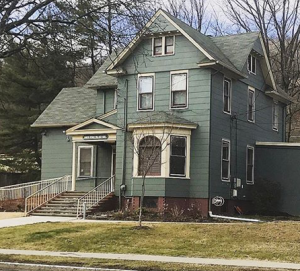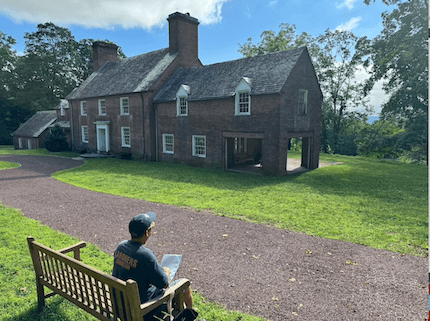
Photo Credit: Kenyatta Jones-Arietta via Instagram
by Sasha Cohen
South Nyack, Nov 25 — Over 100 residents gathered on Zoom last night to learn about the potential financial impact of village dissolution. Project directors Paul Bishop and David Riley, who work for CGR, the Rochester-based consulting firm hired by the South Nyack Village Board to analyze the financial impact of dissolution, presented their findings in a PowerPoint before taking questions.
Bishop and Riley stated that their projections are conservative, and that CGR’s role is not to urge the village in a particular direction, but rather to inform residents before they cast their votes in the Dec. 17 referendum. Published yesterday afternoon, their full report can be found on the village website. Here are 10 important takeaways:
Most Things Won’t Change Under Dissolution
Dissolution would not have any impact on the village’s school and library district, fire protection, emergency medical services, postal delivery, water, sewer, or utilities. The largest share of a South Nyack homeowner’s taxes goes to the school and library district, with the village taxes responsible for the next largest share, about 22%. Should residents vote in favor of dissolution, only their village and town taxes would change at all.
Savings
The CGR projects that for a house with an assessment of $200,000 and a market value of about $480,000, the homeowner would save $1,440 annually in property taxes after dissolution.
Calculate Your Taxes
The CGR has created a tax calculator, where you can plug in the estimated value of your house to receive an estimate of how much you would likely save if the village were to dissolve. It should be noted, however, that Orangetown does not provide trash pick-up, so residents can subtract an estimated $360 from their projected yearly savings given by the CGR calculator.
Police
Currently, the South Nyack Department serves the village of South Nyack and the village of Grandview. SNPD currently employs 6 full time and 10 part time officers, and if the village dissolves, Orangetown would likely hire 5 full time officers to cover the South Nyack area. The report did not provide any concrete vision for how Grandview would replace its law enforcement, as these decisions would have to be made by the village in the wake of dissolution.
Department of Public Works
“The basic services such as street maintenance and plowing would be absorbed by the Town of Orangetown Highway Department,” reads the report. “The Village residents would fall under the existing rotation used by the Town to gather residential brush and leaf pickup in the former Village.” Orangetown may need to hire about 3 more employees to cover this additional workload. Many villagers have expressed reluctance to give up South Nyack’s DPW, and while the report acknowledges that residents indeed have a qualitative interest in how their services are provided, it focused mainly on giving residents a comparative look at how their taxes would change under dissolution.
Planning and Zoning
Under dissolution, the village’s current zoning laws would remain in effect for 2 years. After that point, Orangetown would be in charge of zoning in South Nyack. Many meeting-goers wondered how Orangetown’s zoning codes differ from South Nyack’s, but for now, no one has conducted a comprehensive, side-by-side comparison of the 2. Meanwhile, Orangetown is currently seeking to develop a comprehensive plan, and should the village choose to dissolve, it will need to incorporate South Nyack into its ongoing planning efforts.
Justice Courts
The Village of South Nyack Justice Court would be dissolved, although the impact on the shared service with Grand View-on-Hudson is unclear at this time.
Debt
South Nyack currently has an outstanding debt of $975,000. If the village ends up dissolving, this debt will still remain the sole responsibility of the village properties, and not the town as a whole. The CGR estimates “that for the next several years, the cost of servicing the debt would be about $1.10 per thousand. That would drop in half in 2025.”
Citizen’s Empowerment Tax Credit
The report explains that “as part of State Finance Law Chapter 54, a town where a village dissolves will receive additional aid to municipalities (AIM) after dissolution and in subsequent years….If this was received by the Town, 70 percent would need to be used to reduce taxes.” The potential compensation from the Citizen’s Empowerment Tax Credit was not included in any of the CGR’s tax rate calculations.
Less Political Sway
As the report points out, dissolution would mean that “a South Nyack voter would no longer be one of about 1,900 voters in a village, but one of about 38,000 in a town.” Of course, South Nyack residents would be represented by their town officials, but their roles would likely be less direct, involved, or intimate.
See also:








